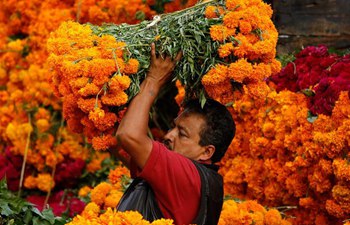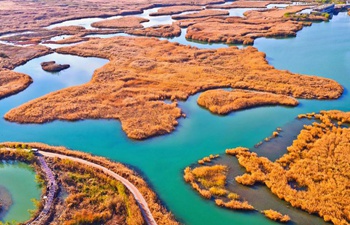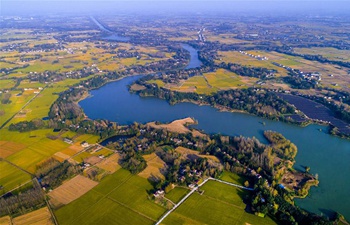KATHMANDU, Oct. 31 (Xinhua) -- Risks from natural hazards are gradually outpacing resilience in South and Southwest Asia and have the potential to reverse hard-won development gains in the sub-region, the United Nations Economic and Social Commission for Asia and the Pacific (ESCAP) said here in a report on Tuesday.
Launching the sub-regional report in Kathmandu, head of the UN ESCAP Sub-regional Office for South and South-West Asia, Michael Williamson, underscored that "the 2030 Agenda for Sustainable Development recognizes the devastating and pervasive impacts that natural disasters can have and incorporates the principles of disaster risk resilience as a central tenet of the promise to leave no one behind."
"In South and Southwest Asia, protecting livelihoods from the impact of disasters must move to the top of the policy agenda, with the recognition that even the most efficient early warning systems may not be sufficient," Williamson told the media.
In 2016 and 2017 alone, avalanches, snowfall and rain-related disasters have caused considerable damage in Afghanistan, while torrential monsoon rains in Bangladesh, India and Nepal have killed over 900 persons and affected almost 41 million people, said the report entitled The Asia-Pacific Disaster Report 2017.
The poorest and most vulnerable sections of the society are disproportionately affected by these disasters in this sub-region which can very quickly strip poor people of their livelihoods, pushing them back into absolute poverty or trapping them in an inter-generational transmission of poverty, the report said.
Though the sub-region is continuing to develop quickly, it is still home to a large portion of the world's absolute poor, the ESCAP said.
Disasters also widen socioeconomic disparities and exacerbate existing inequalities, according to the report.
Beyond the human costs, research undertaken by ESCAP has indicated that in the sub-region, floods have cost 94 billion U.S. dollars in estimated damages within the past 15 years, the report said.
Forty percent of global economic losses from disasters will be in the Asia-Pacific region by 2030 with the least developed countries suffering from annual losses of around 2.5 percent of GDP, the report said.
The launch of the Asia-Pacific Disaster Report 2017 in Nepal was part of a two-day workshop on addressing disaster risks specific to South and Southwest Asia in Kathmandu which brought together government officials and disaster management specialists from 10 countries in the sub-region.
Delivering a key note address at the workshop, Arbind Kumar Mishra, a member of the National Planning Commission of Nepal, said that disasters affect everyone but impact the poor and vulnerable people the most.
"Low-income countries account for only about 9 percent of the world's disaster. Yet, they experience 48 percent of fatalities," Mishra said.
He underscored the timeliness of the meeting after the approval by the parliament of Nepal of a long-awaited disaster mitigation regulation act and underscored the importance of the workshop to identify ways to convert risks into resilience.
Nepal ranks as the fourth most climate vulnerable country in the world, according to the ESCAP.

















